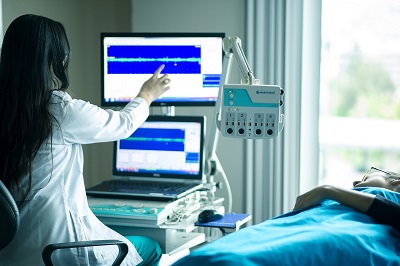To apply for Class C medical device registration in Indonesia through the Ministry of Health (MOH), specifically under the National Agency of Drug and Food Control (BPOM), you need to fulfill several documentation and regulatory requirements. Class C devices are considered high-risk devices, which means the registration process is more detailed and stringent compared to lower-risk classes.
Below are the key requirements for applying for Class C medical device registration in Indonesia:
1. Classification Confirmation
- Ensure that the device is correctly classified as Class C (high-risk) according to BPOM's classification system. This typically includes devices that are:
- Implantable.
- Used in critical care.
- Diagnostic or therapeutic devices that have a significant impact on health and safety.
2. Appoint a Local Authorized Representative (AR)
- Foreign Manufacturers: If you are not based in Indonesia, you must appoint a local Authorized Representative (AR) who will act as the liaison between BPOM and the manufacturer.
- Role of AR: The AR is responsible for:
- Submitting the registration application.
- Communicating with BPOM on behalf of the manufacturer.
- Ensuring compliance with local regulatory requirements.
- Managing post-market surveillance and reporting adverse events.
3. Prepare Required Documentation
You must submit a comprehensive set of documents as part of your registration application. These documents should demonstrate that your medical device meets the required safety, quality, and efficacy standards.
a) Product Technical File
- Description of the Device: Details about the design, manufacturing process, intended use, and functional characteristics of the device.
- Standards Compliance: Evidence that the device meets relevant international standards (e.g., ISO 13485, IEC 60601 for electrical devices, etc.).
- Design and Manufacturing Information: Documents that show the device's design and manufacturing processes are compliant with Good Manufacturing Practices (GMP).
b) Clinical Evaluation Report
- Clinical Data: Evidence of clinical trials or studies that demonstrate the safety and efficacy of the device.
- If clinical data is not available from local trials, international clinical trial data from recognized regulatory bodies may be acceptable.
c) Risk Management Report
- Based on ISO 14971 or other relevant standards, this report should identify and assess potential risks associated with the device, and how those risks are mitigated during design and production.
d) Quality Management System (QMS) Certificates
- Provide proof that the manufacturer complies with ISO 13485 or another recognized QMS standard.
- Evidence that the manufacturer follows Good Manufacturing Practices (GMP).
e) Manufacturing License and Compliance Certificates
- Provide evidence of the manufacturing facility's compliance with regulatory requirements in the country of origin.
- Any applicable certifications related to device safety, performance, or quality standards should be submitted.
f) Certificate of Free Sale (CFS)
- If the device is already marketed in another country, submit the Certificate of Free Sale issued by the regulatory authority of the country where it is sold. This certificate confirms that the device is legally sold and safe for use in that country.
g) Product Labeling and Instructions for Use (IFU)
- Provide Bahasa Indonesia translations for all labeling, packaging, and user manuals.
- Labels must include important information such as the device name, manufacturer details, usage instructions, contraindications, warnings, and safety instructions.
h) Other Technical Documents
- Depending on the device type, BPOM may require additional documentation such as:
- Performance test data (e.g., mechanical, electrical, or biocompatibility testing).
- Stability studies (for devices that degrade over time or require specific storage conditions).
- Validation reports for software or other critical components.
4. Submit Application via BPOM’s e-Registration System
- The Authorized Representative (AR) must submit the registration application electronically through BPOM's official e-Registration System.
- All documents must be submitted in Bahasa Indonesia, including translated versions of clinical evaluation reports, instructions for use, and labels.
- The AR will need to complete the registration form on the e-Registration portal, upload the documents, and pay any required registration fees.
5. BPOM Evaluation and Review
- Technical Review: BPOM will evaluate the device’s technical file, clinical data, risk management documentation, and other materials submitted.
- Testing: BPOM may request additional testing, or ask for data from accredited laboratories in Indonesia or other recognized testing facilities.
- On-site Inspection: In some cases, BPOM may inspect the manufacturing facilities to verify compliance with local regulations.
- Clarification Requests: If the submitted documents are insufficient or unclear, BPOM may request additional information or clarification.
6. Approval and Issuance of Marketing Authorization (NOM)
- If BPOM is satisfied with the submission and the device complies with all relevant regulations, BPOM will issue a Marketing Authorization (known as NOM - Nomor Registrasi Obat dan Makanan).
- The Marketing Authorization is valid for a period of 5 years and can be renewed before the expiry date.
- Upon receiving the marketing authorization, the device can be legally marketed and sold in Indonesia.
7. Post-Market Surveillance Requirements
- Adverse Event Reporting: The manufacturer or Authorized Representative must report any adverse events, product failures, or recalls to BPOM.
- Product Recalls and Corrective Actions: If a device is found to be defective or unsafe, the manufacturer or AR must initiate recalls or corrective actions in cooperation with BPOM.
- Ongoing Compliance: The manufacturer must continue to ensure that the device remains compliant with any changes to Indonesian regulations and ensure ongoing safety monitoring.
Key Requirements Summary
- Appoint a Local Authorized Representative (AR).
- Prepare Documentation including:
- Product technical file.
- Clinical evaluation report.
- Risk management report.
- QMS certificates (ISO 13485).
- Manufacturing licenses and compliance certificates.
- Certificate of Free Sale (if applicable).
- Labeling and IFU in Bahasa Indonesia.
- Submit the Registration Application through BPOM's e-Registration system.
- BPOM Evaluation of the submission (may include testing and inspections).
- Receive Marketing Authorization (NOM) if the device is approved.
- Post-Market Surveillance to ensure safety and regulatory compliance.
If you need help with any specific step in the process, such as finding an Authorized Representative or preparing the technical file, feel free to ask!
.png)
.jpg)

.png)

.png)